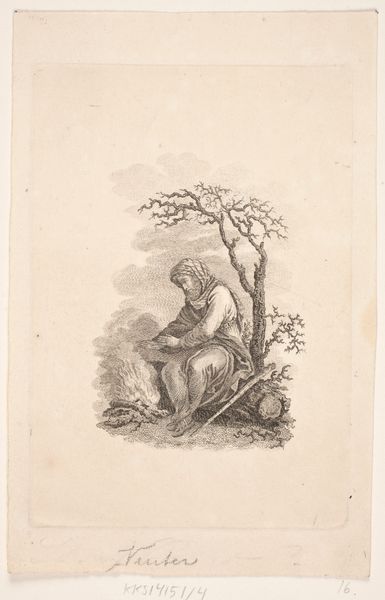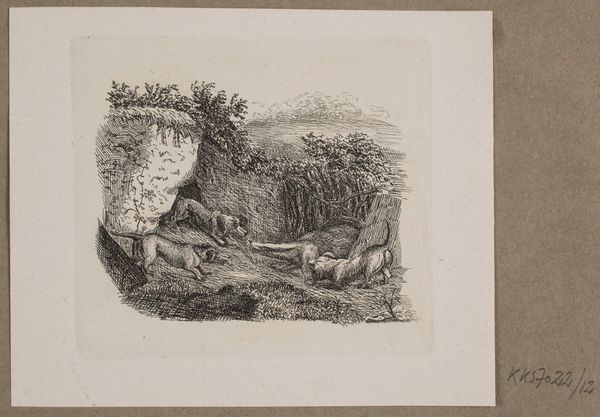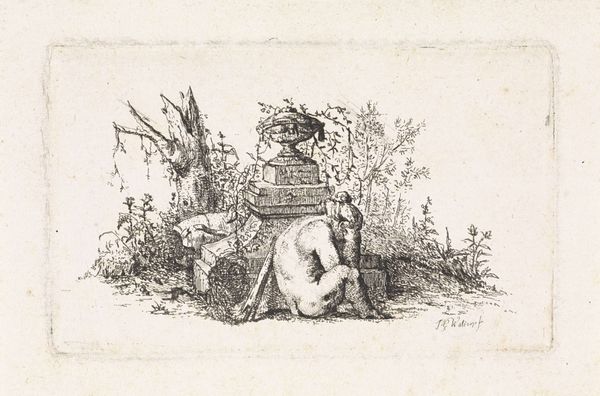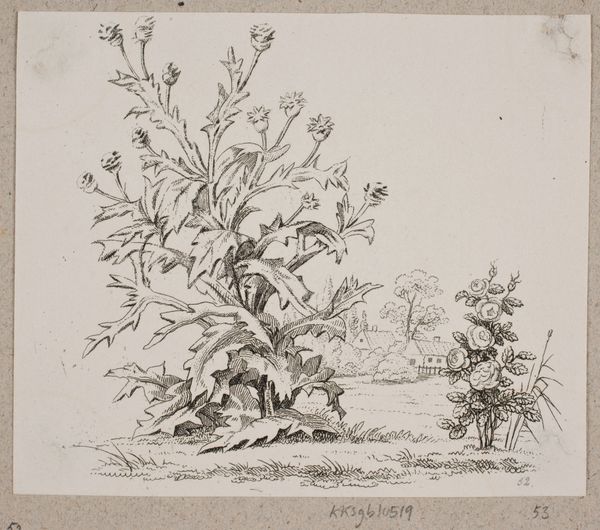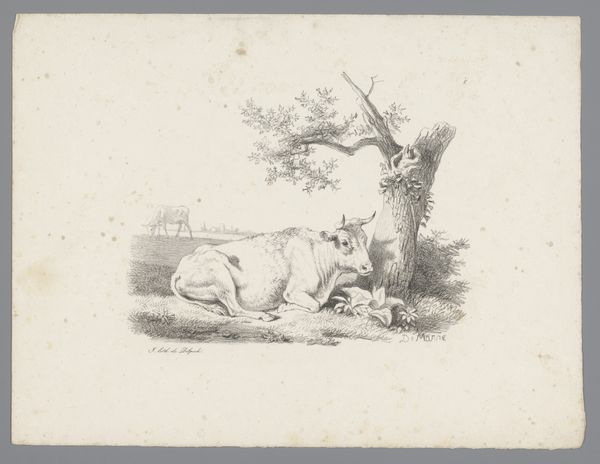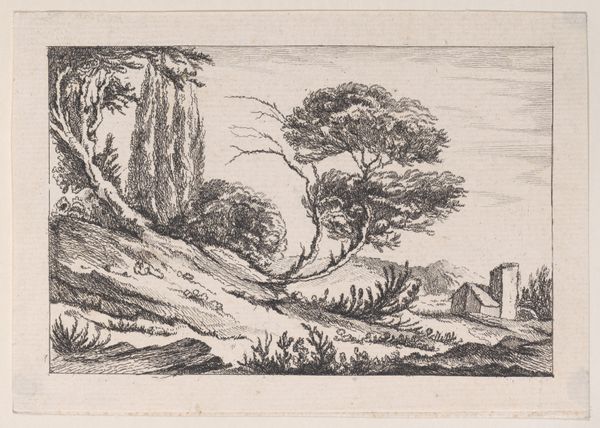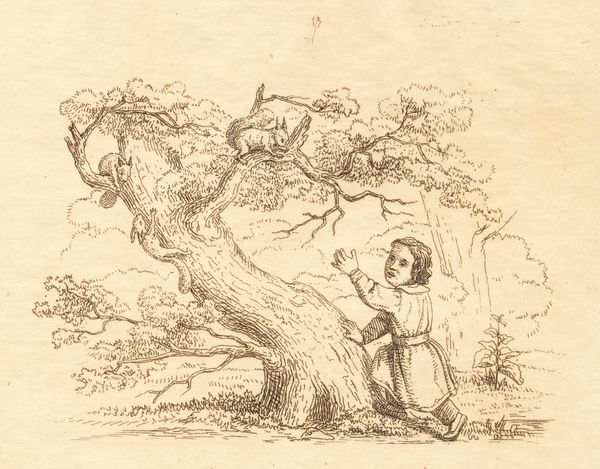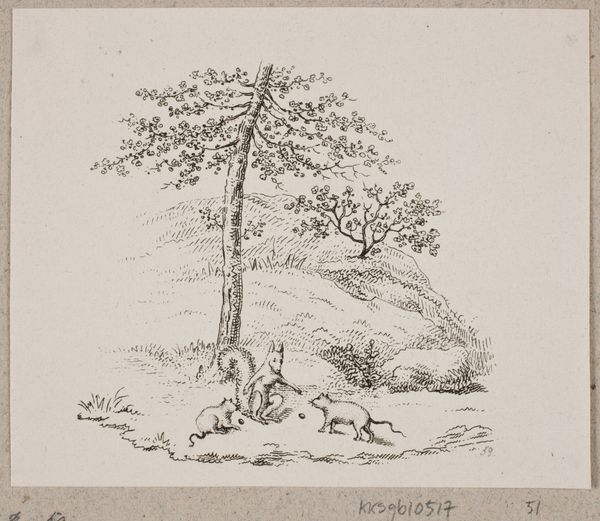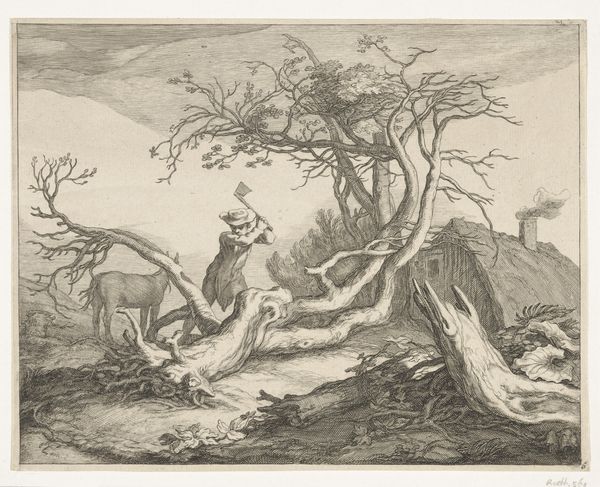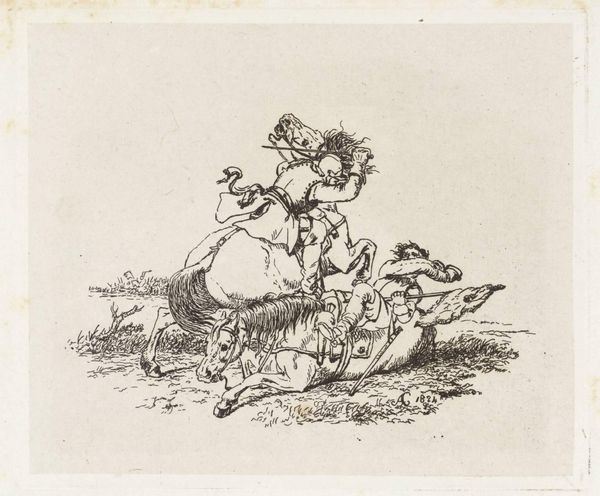
Illustration til "Svanereden" i H.C. Andersen, "Eventyr og Historier", Bind 2 1870 - 1873
0:00
0:00
drawing, print, engraving
#
drawing
# print
#
landscape
#
line
#
engraving
Dimensions: 68 mm (height) x 84 mm (width) (bladmaal)
H.P. Hansen made this illustration for Hans Christian Andersen's "The Swan's Nest" using a method called etching. Etching begins with a metal plate covered in a waxy, acid-resistant ground. The artist scratches into this ground with a needle, exposing the metal. When dipped in acid, the exposed lines are eaten away, creating grooves. Ink is then applied to the plate, filling these grooves, and the surface is wiped clean. Finally, paper is pressed against the plate, transferring the ink and creating the print. The density of lines indicates shadow and texture, lending depth to the scene. The process requires control and precision. With a long history, etching was favored for its ability to capture fine detail, allowing illustrations like this to be reproduced and distributed widely, bringing Andersen’s fantastical world to life for a broad audience.
Comments
No comments
Be the first to comment and join the conversation on the ultimate creative platform.

